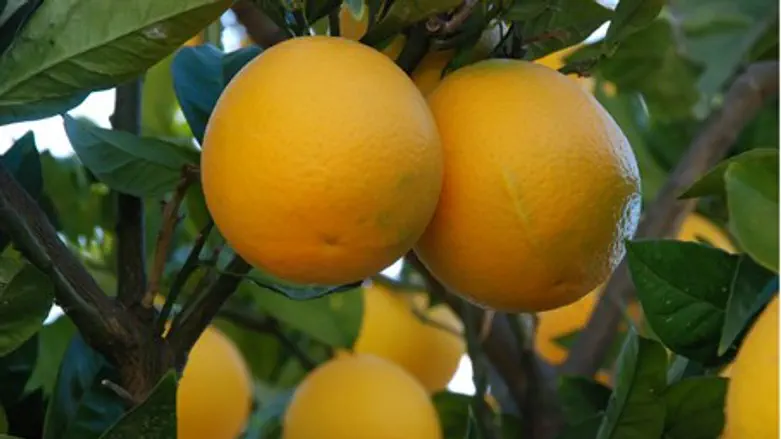
Tu B'Shvat, the fifteenth day of the Hebrew month of Shvat, is called the New Year of the Trees in the Talmud and falls this year on Wednesday, February 8th. Halakhic issues with regard to Israel's trees are centered on this day, the Jewish holiday expressing the deep love of the Jewish people for the Land of Israel and its fruits.
Special care has to be taken to maintain the sanctity of the land and the Torah provides many rules for agricultural practices that do not exist anywhere else in the World. Among them, for example, is the prohibition of eating fruit from a tree within the first three years of its planting, called Orlah. Tu B’Shvat is the cutoff date for Orlah in Jewish Law.
In the Diaspora, Jews would try to obtain some of the seven fruits mentioned in the Bible as Israel's best: wheat, barley, grapes, figs, pomegranates, olives and dates. The tale is told of a Hassidic rabbi who told his students that if only they lived in the Land of Israel, they would not have to eat these fruits - they would just go outside and drink in the beauty of the land in order to celebrate Tu B'Shvat - or Chamishasar [fifteen] as it was called yearningly, for short.
In Israel, it is a time when the tree’s sap begins to flow, the blossoms of the almond tree appear, and even though winter is still bringing wind and rain, spring flowers like the red poppies [kalaniot] begin dotting the hills with color.
The past century's "return to Zion" gave rise to the custom of planting trees on the holiday, with the early pioneers setting an example of "making the desert bloom" for future generations in song as well as action. The Bnai Akiva religious Zionist youth group has 15,000 youngsters, including one hundred with special needs, going out to plant trees all over the country this year.
In Hassidic philosophy, the day also represents the renewal of Hashem’s blessing for the land of Israel, and it is said that those who were "righteous men in word and deed" would wear holiday clothes on the day in order to remember the verse in Deuteronomy "Man is as a tree of the field" - although this is not the meaning of the verse in context.
Israel has a land area approximately the size of the US state of New Jersey, but is blessed with a wide variety of stunning landscapes and different regional ecologies namely:
- - The Golan Heights with the snow capped mountains of the Hermon and lots of springs and waterfalls.
- - The Galilee with its green hills, and the Sea of Galilee and the Jordan River.
- - The Mediterranean coastal plain.
- - The Shefela or central hill country.
- - The semiarid mountainous areas of the capital Jerusalem, and Judea and Samaria.
- - The Judean Desert with the Dead Sea that is its own microclimate.
- - The deserts of the Negev and the Arava.
- - Eilat and the Red Sea coral reefs.
Hashem blesses the land of Israel and its produce, and this is reflected in its abundance.
Michelle Baruch, the photographer who sends these photos yearly to Arutz Sheva has tried to capture some of the diversity and abundance in Israel by visiting the Mahane Yehuda marketplace, travelling to some of the Jewish National Fund parks and kibbutzim in the center of the country and by going to the Judean desert. We hope you will enjoy this year’s photo essay! It is the 7th year running.
Credits:
Michelle Baruch is a certified Israeli tour guide and nature photographer. She enjoys taking people on tours of Israel catered specifically to their interests and needs, but a little Off the Beaten Track. To view her touring website, visit www.apricot-tours.com or to see more photos at www.mishmishphotos.com.
Israeli Photographer Yehudit Zagdanski portrays Nature, Beauty and Inspiration through her art. Her work was recently featured on United With Israel's Israel365 project. Contact her at http://israelinspirations.blogspot.com/ or israelinspirationsart@yahoo.com